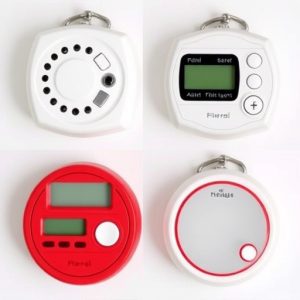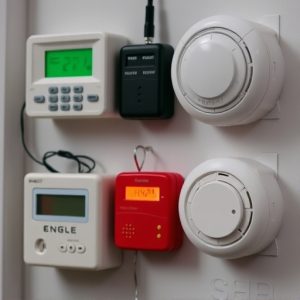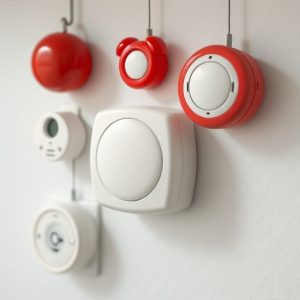Personal Alarm With Remote Activation: Tracking for Safety and Peace of Mind
Personal alarms with remote activation capabilities are vital tools for individuals facing emergenci…….
Personal alarms with remote activation capabilities are vital tools for individuals facing emergencies, offering discretely activated distress signals with location data via wearable tech or smartphone apps. These advanced systems integrate wireless communication and GPS tracking to instantly alert pre-designated contacts or emergency services, ensuring swift assistance for those alone or unable to speak due to fear or trauma. With these personal alarms, users can quickly signal for help with just a push of a button, providing peace of mind and proactive safety measures for those traveling alone, engaging in outdoor activities, or having specific health conditions. Proper usage includes regular testing and keeping emergency contacts up-to-date. Real-life success stories highlight their potential to save lives and provide safety nets.
In today’s world, personal safety is paramount. A personal alarm with remote activation offers a powerful tool for individuals facing distress situations. This innovative device enables quick response through silent alerts sent to emergency contacts, enhancing peace of mind. Our article delves into the intricacies of personal distress signals, exploring when to activate them and the technology powering these lifesaving tools. We’ll discuss benefits, implementation tips, and real-world success stories, providing a comprehensive guide to understanding and utilizing this modern safety solution.
- Understanding Personal Distress Signals: When to Activate
- The Technology Behind Remote-Activated Alarms
- Benefits: Why Have a Personal Alarm With Tracking?
- Implementation and Safety Measures for Effective Use
- Real-World Scenarios: Success Stories and Case Studies
Understanding Personal Distress Signals: When to Activate
Personal distress signals are vital tools for individuals who may find themselves in situations where they need immediate assistance but cannot communicate effectively, such as during emergencies or when experiencing extreme emotional turmoil. Understanding what these signals entail and when to activate them is crucial. A personal alarm with remote activation capabilities offers a convenient solution.
These alarms are designed to be triggered discretely, often through a wearable device or an app on a smartphone. The moment an individual feels distressed or in danger, they can activate the signal remotely, sending out a distress call that includes their location data. This feature is particularly useful when someone is alone or unable to speak due to fear or trauma, ensuring help arrives promptly.
The Technology Behind Remote-Activated Alarms
The technology behind remote-activated alarms for personal distress signals has evolved significantly, offering individuals a powerful tool for safety and peace of mind. These advanced systems utilize a combination of wireless communication and GPS tracking to provide instant alerts in emergency situations. When activated remotely, typically through a smartphone app or dedicated device, the alarm sends out a signal that includes the user’s location data, alerting pre-designated contacts or emergency services.
A personal alarm with remote activation serves as a game-changer in self-protection, allowing users to request help discreetly and efficiently. The remote control feature enables friends, family, or even security professionals to assist swiftly by tracking the individual’s exact position, ensuring timely intervention when they press the distress button. This innovative approach to personal safety integrates seamlessly with modern technology, making it accessible and effective for those in need.
Benefits: Why Have a Personal Alarm With Tracking?
In today’s world, having a personal distress signal with tracking capability can be an invaluable asset for safety and peace of mind. A personal alarm with remote activation offers individuals a sense of security, especially when venturing into unfamiliar territories or facing potential dangers. This compact and discreet device allows users to quickly alert others in case of emergencies, ensuring prompt assistance. With just a push of a button, the alarm can be activated remotely by friends, family, or emergency services, providing an immediate response.
This technology is particularly beneficial for those who frequently travel alone, engage in outdoor activities, or have specific health conditions that require constant monitoring. It offers a sense of autonomy while mitigating risks, as loved ones or emergency responders can track the user’s location and provide aid swiftly. Moreover, having a personal alarm with tracking features promotes proactive safety measures, empowering individuals to take charge of their well-being in various situations.
Implementation and Safety Measures for Effective Use
The implementation of personal distress signals with tracking capability, such as a Personal Alarm With Remote Activation, requires careful consideration and safety measures to ensure their effective use. These devices are designed to provide individuals with an added layer of protection in emergency situations. When activated, they send out alerts that include GPS coordinates, allowing authorities or loved ones to swiftly locate the user.
To maximize their utility, users must familiarize themselves with the device’s functionality and range. Regular testing of the alarm and remote activation features is crucial. Additionally, ensuring adequate battery life and keeping emergency contact information up-to-date are essential safety measures. Proper usage includes carrying the device in a visible location and teaching others about its purpose, fostering an environment where help can be swiftly mobilised when needed.
Real-World Scenarios: Success Stories and Case Studies
In real-world scenarios, personal alarm devices with remote activation capabilities have proven invaluable in various distress situations. Success stories abound where individuals in perilous conditions, such as lost hikers or victims of domestic abuse, have used these devices to summon help instantly. For instance, a hiker caught in rough terrain can activate their personal alarm from their smartphone, immediately alerting emergency services and providing their location. Similarly, case studies highlight the effectiveness of such devices in domestic settings, where victims of abusive relationships have used them to signal for assistance without drawing attention from their abusers.
These success stories underscore the potential of personal alarms with remote activation to save lives and provide crucial safety nets. The ability to discreetly and quickly summon aid is a game-changer, especially in situations where individuals may be unable or unwilling to make a loud noise or place a call. This technology offers peace of mind and empowers users, ensuring they have a means of communication in emergencies, even in remote areas or when facing subtle yet threatening circumstances.
Personal alarms with remote activation are not just tools; they’re life-saving devices that empower individuals to protect themselves in moments of personal distress. By understanding when to activate these signals, leveraging advanced technology, and implementing safety measures, users can ensure their well-being and peace of mind. Real-world success stories highlight their effectiveness, making them a valuable addition to any safety strategy. A personal alarm with tracking capabilities offers enhanced security, especially for those who frequently find themselves in remote or unfamiliar locations.


